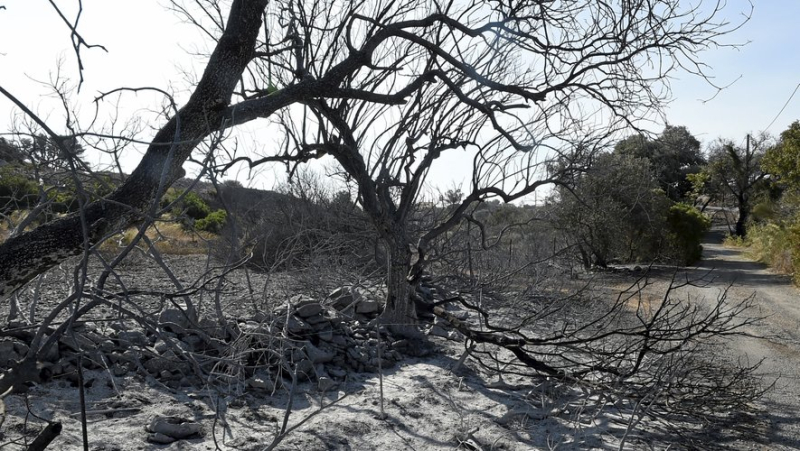“Fire jumps of several hundred meters”: how firefighters controlled the fire in the Gardiole massif

Des points chauds, sous surveillance, subsistent en lisières de forêts. Midi Libre – SYLVIE CAMBON
L’important incendie qui a touché le massif de la Gardiole est fixé, même si subsistent différents points chauds. Le secteur est surveillé de près, ce lundi, par environ 350 sapeurs-pompiers, qui redoutent toujours les rafales de vent.
The Hérault firefighters, assisted by several units from Bouches-du-Rhône, continued their intense surveillance work on Monday, the day after the huge fire that spread through the Gardiole massif. Frontignan, dangerously threatened late Sunday, woke up bruised, its landscape blackened and desolate, its inhabitants in shock. At daybreak, once the fire was fixed, everyone agreed that the disaster “could have been much worse”.
The wind, the main enemy of the firefighters
Because the night from Sunday to Monday was long for the firefighters, deprived of aerial resources since the sun had set. “It's always more difficult when you lose air resources, recalls Colonel Jérôme Bonnafoux, spokesman for the Hérault firefighters. The wind was supposed to drop in the first part of the night, but that was not the case. The firefighters did a huge job to prevent any new outbreaks. They fought against them several times. Especially since at 1 a.m., there was a new outbreak of fire in Nissan and it was necessary to withdraw resources to Frontignan."
"Fire jumps of several hundreds of meters"
If "the battle of fire"was won in the morning, Monday, new hot spots were identified in various places in the pine forest, thanks to the contribution of drones and thermal cameras. The wind is the main adversary of firefighters in such cases. On Sunday, the flames were fanned by gusts of more than 50 km/h. The firefighters admitted to having been surprised by the speed at which the fire spread, facing “large fire jumps of several hundred meters”. The speed of propagation would have reached 5 km/h at the height of the disaster. “It was going very fast, comments the spokesperson for the fire brigade. This forces us to readjust our systems. We are chasing the fire. The combination of air and ground resources ensured that it did not spread."
On the lookout for possible resumptions on the edges of forests
At midday, around 350 firefighters were still mobilized to carry out the "drowning" work, long and perilous, but necessary for the fire to be completely extinguished. “As long as there are still hot spots, this will not be the case, continues Colonel Bonnafoux. We have 300 additional firefighters for any other possible fires that break out during the day, assisted if necessary by a helicopter and planes. While all the hot spots near homes were treated last night, some remain along the edges, at the border with the national forest. Scraping work has begun, to go deep into the embers and prevent them from reigniting. As soon as there is wind and as soon as the temperature rises, as is the case at the beginning of the afternoon, we are not safe from a restart."
This work was to last all day and all night, until this Tuesday. The weather forecast is unfortunately "not favorable" until Thursday, indicate the Hérault firefighters, who will leave the surveillance system in place as long as necessary…
I subscribe to read the rest




